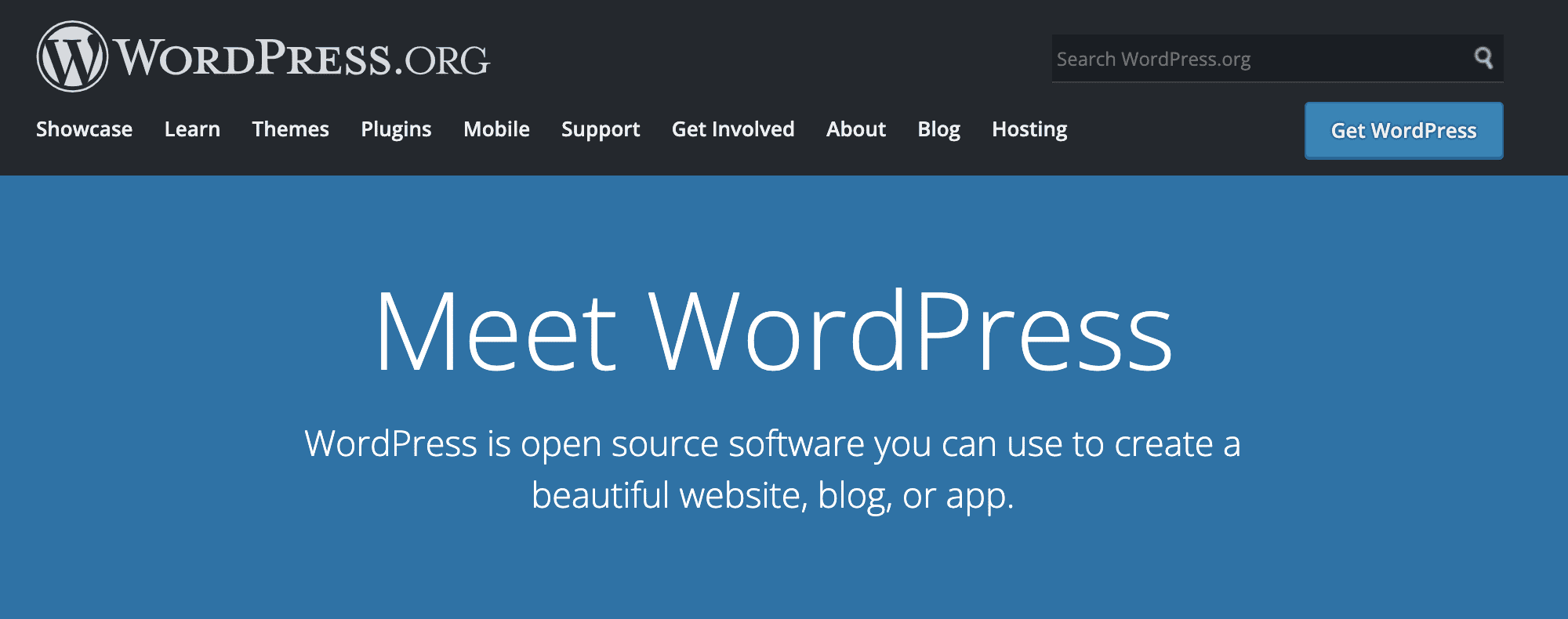Recently I heard someone say that nobody uses WordPress anymore and it made me wonder if that is the impression that people have been given. Perhaps because other platforms do A LOT of marketing whereas WP quietly does its thing, people seem to be under the impression that Wix or Squarespace are the most popular ways to build a website now.

Never one to make assumptions, I did some research to see what the market share is like in 2021 and I have to say I was not surprised by the results I found.
A whopping 64.9% of websites are built on WP. The next most popular is Shopify, the e-commerce platform, at just 5.6%. Joomla is next and then the ones that I mentioned, Squarespace and Wix, are at 2.6% each. That is 8% of the WP market share between the 2 platforms.
Why is WP still so popular?
There are many reasons, but I will go through a few of the top ones (as I see it!)
Price
With some of the other platforms, the pricing is subscription-based. Whereas with WP (WordPress.org, specifically) the only cost for your base website is your domain and hosting. WP itself is free to install and use.
You can spend on plugins, themes and development for extra functionality, but all of that is optional.
Some of the platforms advertise as free but they often cost more than expected when all things are considered.
Flexibility
WordPress is almost as flexible, if not as flexible, as a custom-built website. If you know how, you can develop any functionality linked in with WordPress. The other platforms are more restricted in what you can do, which some people prefer as they feel safer with something that doesn’t let them do “the wrong thing”. However, as your business grows and you want your website to grow with you this lack of flexibility will often get in the way. We see many people who have started with something like Wix and hit a barrier in terms of what they can do at which point they decide to move to WP.
WordPress grows with you from a simple website/blog to a full-on e-commerce site.
Usage
Strange as it may sound, the fact that almost 65% of websites are built on WP works in your favour if you use it too. The high level of usage means that if you run into bother or are trying to figure out how to do something with WP you will pretty much always find someone else who has already been there and figured it out so that you don’t have to!
The high level of usage also means that there are a ridiculous amount of plugins, themes etc that have been developed to customise WP to your exact needs in terms of how it functions or how it looks.
Consistent
Fads come and go but WP has been consistently leading the way for many years and is continually evolving to make sure that it isn’t going anywhere.
Ownership
With WordPress (again, I am referring to WordPress.org, WordPress.com is a different setup), you own your stuff. It is so important to ensure that you have control over your online presence and with a WordPress website it is entirely owned by you. With any of the subscription platforms as well as any of the social media platforms, the content that you add is out of your control as is the platform itself.
This is why we always recommend that you put your website at the core of your online marketing efforts, post your content to your website and share so that everything else is spokes in a wheel and the piece you own is at the centre of everything.
That way if one of the platforms you use is disabled, for whatever reason, it is a spoke in your wheel and not your entire wheel that is taken down.
Is there a case for using another website platform?
In some cases I can see the reasons why people will prefer to use another platform:
- if they want to do the entire thing themselves and don’t have the technical knowledge to set up a WordPress site
- if they want to get online quickly and are not too worried about their site design
- if they want something easy to use and don’t know how to set WordPress up to be as easy to use as some of the other website builders.
Where it makes sense for someone to use another option I would generally recommend Squarespace as it gives the option to migrate to WP later if/when the need arises.
We do have another option available as an alternative for the DIYer
Our WP Starter Kit
We think this is a great compromise – gets you started on WP so there’s no migration later, but keeps the initial setup as quick and easy as possible. In addition, this is a DIY option but you have Coppertops support available if needed so you are not on your own.
With this package, we set up a hosting account, install WordPress with the essential plugins for functionality and design. We include things like a page builder which makes it super easy to add your content and design your own site.
We then provide you with training videos to get you started on building your site, and we are always available to help on an ad hoc basis if needed. Contact us if you would like more information on this offer.








